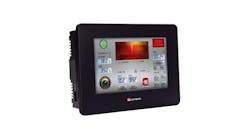Many machine-builder OEMs could benefit from mounting automation components directly on their machines instead of in control cabinets. This has been a goal of many OEMs for some time for a number of reasons, and it’s more feasible now as more components are available with appropriate IP69K and NEMA 4 ratings.
The two main reasons for the growth of the machine-mount trend are elimination of control cabinets and modularization. Eliminating the control cabinet results in obvious savings in terms of money, space and time. The benefits of modularization are not as obvious, but are often even more compelling for some OEMs.
Machine-mount automation components are a particularly good fit for machine builders assembling their machines from standard modules, with each module performing one or more particular functions, such as transferring parts. These machine builders try to use modules to the greatest extent possible to limit the extent of customization required to meet different customer demands.
A big issue with modules is testing each one prior to assembly into a machine. If the module has no control components onboard, then all of the sensors, actuators, motors and other components must be wired back to a test panel containing the controller and I/O. Alternately, the module can be connected to the machine’s central control panel, but this is not optimal because it doesn’t allow the module to be tested prior to final assembly and test of the entire machine.
Machine-mount automation components address the testing issue and facilitate modularization in two main ways. The first is to mount the I/O directly to the module and then connect the I/O to the module’s components. In this instance, just two cables need to be connected to the module for test, one for power and one for control. The control cable will come from the machine’s central controller, which can be mounted in a portable test box.
This allows module testing to be performed with a minimum of wiring and cabling. Once a module is fully tested, it can be shipped to a customer site for assembly by the OEM or its contractor. Because the module has been fully tested in the shop, its correct operation is assured in field.
New advances in machine-mount I/O can combine the power and control cables from the controller to the I/O into one cable, simplifying test and final assembly.
Machine-mount I/O enables modularization, but does require wiring and cabling from the module to the main controller. Mounting the controller in a portable test box to perform a factory acceptance test can be a chore, and there’s always the possibility of some unforeseen circumstance arising at the customer site because of changes from the shop test environments to the site.
For example, errors can be made with wiring and cabling from the module I/O to the central controller. Another potential issue is subtle differences between the controller used in shop test and the one used at the site. Even if the controller is the same model, firmware updates and other software issues can cause problems that would not be detected during shop test, but only at the site.
To address these potential issues, some OEMs would instead prefer to make the module’s control system completely self-contained by using a machine-mount controller instead of just machine-mount I/O. This approach eliminates the issues outlined above, and it makes the shop test environment virtually identical to the site.
Of course, using a machine-mount controller does restrict the options available to the OEM, as not all vendors make these types of products. Even those that do will charge quite a bit more for their machine-mount as opposed to their cabinet-mount products, and these vendors will not make the entire line of controllers available in machine-mount versions.
Other drawbacks of this approach are cost and footprint. Supplying modules with their own controllers is more expensive than simply upsizing the central controller to handle the modules. Each module will also require more space to mount a PLC or PAC as opposed to I/O.
Most machine builders don’t use modules, but instead assemble their machines as monolithic entities, customizing the entire assembly as required. Machine-mount PLCs and PACs will find fewer uses in these types of applications, but I/O modules and other components can still be widely employed, often to great advantage.
For many machines, the main benefit of machine mountI/O is reducing wiring. “Traditional, centralized control panels require many point-to-point connections, as well as long conduit and cable runs,” says Todd Bissell, commercial program manager at Rockwell Automation. “The result is long commissioning time and a system difficult to troubleshoot and repair. The plug-and-play connections of on-machine products allow for simplified, modular designs and faster installation while reducing or eliminating wiring errors. The streamlined wiring of on-machine solutions, plus the onboard diagnostics, generally in the form of status LEDs, of the associated products, makes troubleshooting and component replacement quick and easy.”
Andy Garrido, I/O product specialist at Beckhoff Automation offers additional reasons to use these technologies. “Machine-mount remote I/O helps reduce machine footprint and eliminates small electrical cabinets distributed down a machine line.”
Remote I/O execution speeds are limited by the speed of the network connection to the controller, which is never as fast as the backplane communications for local I/O, but recent advances have closed the gap. “Control system speed and flexibility are paramount, and by pairing centralized control with a distributed I/O system, commands and data transfer can be made without communication bottlenecks,” concludes Garrido.
Machine-mount used to be limited to just basic I/O, but more automation components are being offered with this option. This allows machine builders to pick and choose where best to mount each component, either in a control cabinet or on the machine.
Homepage image courtesy of cooldesign at FreeDigitalPhotos.net




